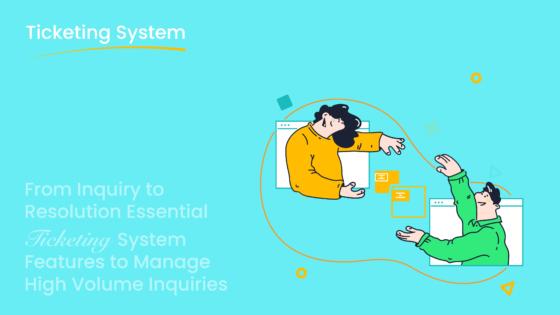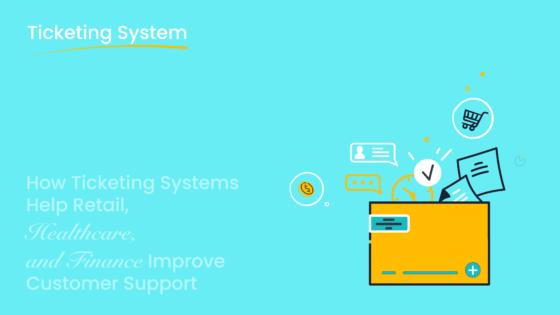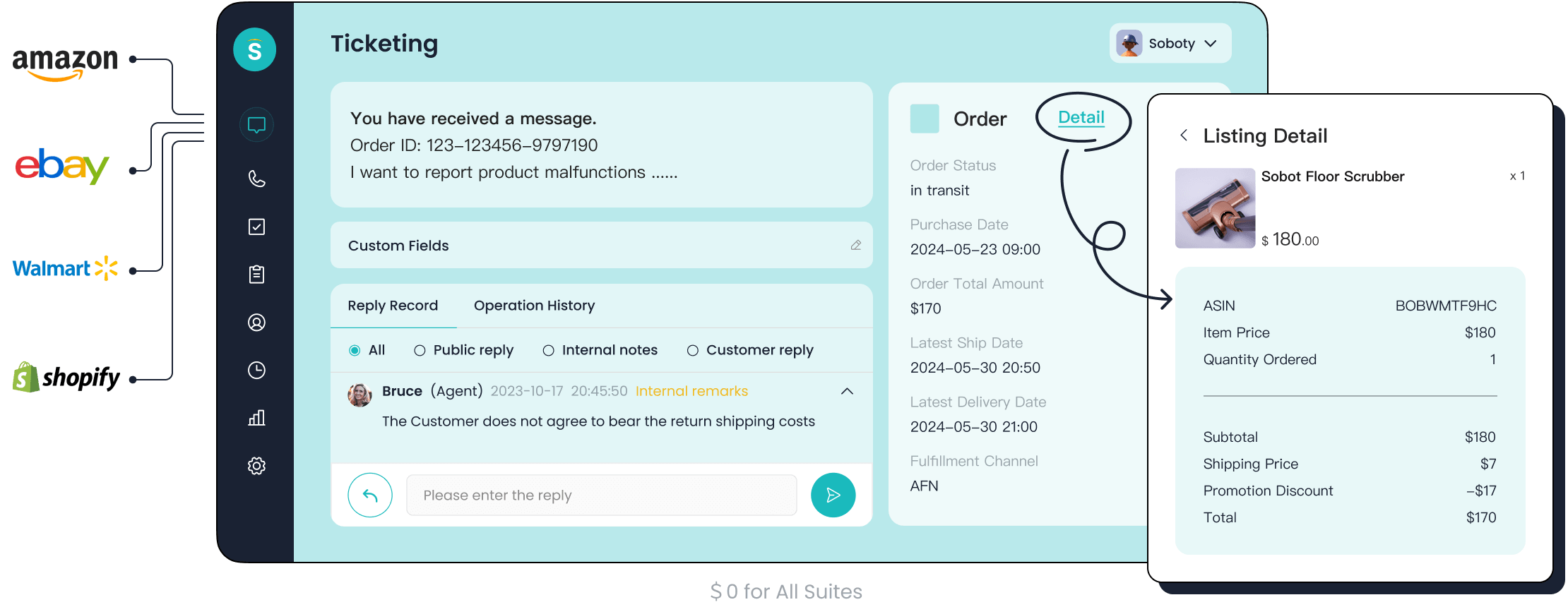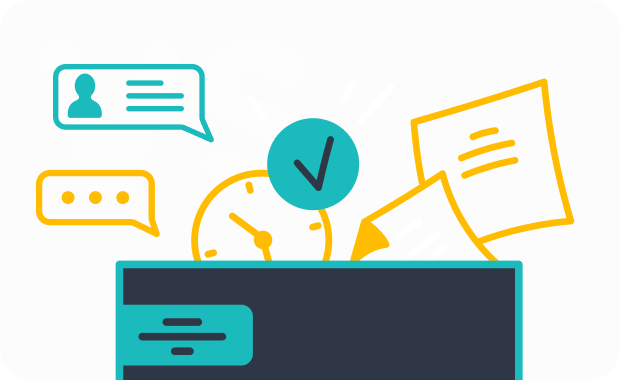Exploring the Benefits of Ticketing System for Efficiency Gains

Ticketing systems like Sobot AI transform customer service by streamlining every step of the support process. A McKinsey & Company survey found that 70% of customers expect quick and seamless solutions, highlighting the benefits of ticketing system adoption. Companies achieve faster response times, lower costs, and higher satisfaction scores when they use a unified platform such as Sobot call center. Automation, unified channels, and measurable improvements define the efficiency that organizations gain from the benefits of ticketing system integration.
Benefits of Ticketing System

Modern customer service teams face constant pressure to deliver quick, consistent, and high-quality support. The benefits of ticketing system adoption become clear when organizations seek to overcome slow response times, fragmented communication, and manual workload. Sobot’s unified platform and advanced automation features help businesses streamline ticket management, improve workflow management, and resolve tickets faster. These advantages address common pain points in customer service, such as delayed responses and inefficient processes, while supporting business growth and customer satisfaction.
Faster Response
Speed is critical in customer service. Customers expect immediate answers, and slow response times can lead to frustration or lost business. Traditional support methods often rely on manual triage and tiered escalation, which cause tickets to sit in queues for hours or even days. Each handoff adds delay, and bottlenecks become common.
Ticketing systems like Sobot transform this process. AI-powered ticket management automatically routes, categorizes, and prioritizes requests. Natural Language Processing (NLP) and Machine Learning (ML) enable instant understanding of ticket content, sending each inquiry to the right agent or team. This dynamic approach reduces mean time to resolution (MTTR) from over 30 hours with manual tools to under 15 hours with automation. Some organizations, such as Broadcom, have resolved 57% of IT issues in under 60 seconds using AI-driven systems.
Sobot’s ticketing system leverages these technologies to ensure faster issue resolution. The platform provides 24/7 multilingual support, allowing customers to receive help at any time. Automated workflows and real-time notifications keep agents informed and responsive. As a result, businesses see improved efficiency and higher customer satisfaction.
Tip: Fast response times not only improve customer experience but also boost agent productivity by reducing backlog and stress.
Unified Channels
Fragmented communication is a major challenge for support teams. Customers reach out through email, chat, phone, and social media, often switching between channels during a single interaction. Without a unified system, agents struggle to track conversations, leading to repeated questions and inconsistent service.
A ticketing system with unified channels, such as Sobot’s, consolidates all customer interactions into a single platform. Agents access complete communication histories, regardless of the channel used. This approach preserves context and ensures that customers never have to repeat themselves. Customers can start a conversation on one channel and continue on another without losing information.
Unified ticket management improves workflow management by centralizing data and streamlining processes. Automated ticket routing and prioritization ensure that each request reaches the right agent quickly. Real-time synchronization across channels keeps information up-to-date, supporting consistent and accurate responses.
- Agents spend less time searching for information.
- Customers enjoy seamless support across their preferred channels.
- Managers gain visibility into team performance and customer trends.
Sobot’s omnichannel solution integrates with platforms like Shopify and supports email, voicemail, and chat. The system’s analytics tools provide insights into key metrics such as resolution time, SLA compliance, and customer satisfaction. This unified approach enhances both agent productivity and customer experience.
Automation Advantages
Manual ticket handling consumes valuable time and increases the risk of errors. Support teams often face repetitive tasks such as ticket creation, assignment, and status updates. These activities slow down workflow management and limit the ability to scale operations.
Automation is one of the most significant benefits of ticketing system adoption. Sobot’s platform automates ticket creation, categorization, and assignment using AI and custom trigger rules. The system prioritizes tickets based on urgency, customer history, and issue complexity. Automated workflows ensure that tickets move through the resolution process efficiently, reducing manual intervention.
Self-service options, such as AI-powered chatbots and knowledge bases, empower customers to resolve common issues independently. This reduces ticket volume and allows agents to focus on complex problems. For example, a testimonial from Arcos Dorados highlighted a 20% reduction in help desk requests due to automation and self-service features.
Sobot’s ticketing system also includes canned responses, categorized templates, and time-triggered actions. These tools further streamline ticket management and support faster issue resolution. Automation not only improves efficiency but also helps teams handle higher ticket volumes without increasing staff.
Note: According to a Salesforce survey, 79% of IT leaders believe generative AI helps lighten team workloads and reduce burnout.
Benefits at a Glance
- Consolidation of customer interactions into unified threads across multiple channels.
- Automated ticket queuing, assignment, and prioritization.
- Real-time support and escalation workflows for timely attention.
- Data-driven insights through analytics and reporting.
- Scalability to support business growth and increased ticket volume.
The benefits of ticketing system implementation extend beyond faster response times. Unified channels and automation drive efficiency, improve workflow management, and enable organizations to resolve tickets faster. Sobot’s advanced features help businesses achieve measurable improvements in customer satisfaction and operational performance.
Sobot Ticketing System Features

Omnichannel Integration
Sobot’s ticket management system stands out with its powerful omnichannel integration. This feature connects customer interactions from email, chat, voice, and social media into one unified platform. Agents can view every conversation in a single workspace, which helps them respond quickly and accurately. Customers receive a consistent experience, no matter which channel they use. Sobot supports over 50 languages, making it easy for global businesses to serve customers in their native language. This multilingual capability builds trust and increases satisfaction, especially for international e-commerce stores.
Integration with platforms like Shopify allows Sobot to automate up to 70% of customer requests. This reduces support costs by up to 30% and helps recover up to 25% of abandoned carts. Personalized product recommendations and instant support drive higher conversion rates and boost sales. The system also uses AI to recognize customer intent and proactively offer solutions, increasing automated resolution rates by up to 35%. These features make ticket management more efficient and ensure that no customer request is missed.
Tip: Omnichannel ticket management streamlines workflows and improves teamwork, so agents can focus on solving complex issues.
SLA Management
Service Level Agreement (SLA) management is a core part of Sobot’s ticket management solution. SLAs set clear expectations for response and resolution times, which helps teams prioritize urgent tickets. Sobot automates ticket assignment using intelligent triggers, sending each inquiry to the right agent without manual steps. This reduces errors and speeds up ticket management.
The system monitors SLA performance in real time. If a ticket nears its deadline, Sobot sends alerts and escalates the issue to senior agents. This ensures that teams resolve tickets quickly and meet customer expectations. SLA management also defines roles and escalation paths, which increases transparency and accountability. By automating workflows and prioritizing tickets, Sobot helps companies achieve higher first contact resolution rates and better customer satisfaction.
- 52% of customers expect a response within an hour. Sobot’s SLA tools help teams meet these demands.
- Automated escalation and clear communication protocols keep ticket management on track.
Analytics and Reporting
Sobot’s analytics and reporting tools give managers deep insights into ticket management performance. The customizable dashboard tracks key metrics like response time, resolution rate, and customer satisfaction scores. Managers can generate detailed reports to spot trends and measure agent productivity. Real-time analysis of customer data helps teams understand needs and improve service strategies.
Analytics also support better decision-making. By identifying common issues and bottlenecks, managers can adjust workflows and training. The system’s reporting features help prioritize and resolve customer issues efficiently, which leads to higher support quality. For example, Sobot’s analytics can show which channels receive the most tickets or which agents resolve issues fastest. This data-driven approach makes ticket management more effective and helps businesses grow.
Note: Analytics and reporting turn ticket management from a reactive process into a proactive strategy for continuous improvement.
Workflow Automation

Sobot’s workflow automation transforms customer support by removing repetitive manual steps and enhancing workflow management at every stage. The system uses ai-powered ticketing to assign, categorize, and respond to tickets with remarkable speed and accuracy.
AI-Powered Routing
AI-powered ticketing in Sobot leverages natural language processing and machine learning to understand the context and urgency of each inquiry. The system instantly routes tickets to the most qualified agent or team, eliminating wait times and reducing errors. This approach ensures that workflow management remains efficient, even during high-volume periods. AI automates classification and prioritization, so agents can focus on solving complex issues rather than sorting tickets. Real-time analytics and feedback loops further optimize routing, helping teams maintain consistent service quality and make smarter decisions.
According to industry research, 76% of customers expect quick responses, and AI-driven routing helps meet this demand by accelerating ticket resolution.
Reducing Manual Tasks
Automation in Sobot’s ticketing system reduces manual tasks such as ticket sorting, status updates, and repetitive data entry. Automated workflows handle ticket creation, assignment, and escalation, which streamlines workflow management and saves valuable time. Agents no longer need to manually route tickets or draft responses for common issues. Instead, chatbots and AI assistants provide instant answers to routine questions, while integration with knowledge bases gives agents quick access to relevant information. This shift allows support teams to focus on strategic and creative activities, boosting productivity and reducing burnout.
- 90% of knowledge workers report that automation frees them from repetitive tasks.
- 88% of small business owners say automation helps their companies compete more effectively by improving efficiency and reducing errors.
Canned Responses
Canned responses in Sobot’s platform offer pre-written templates for frequent customer inquiries. These responses enable agents to reply quickly and consistently, improving workflow management and ensuring uniform communication across all channels. Canned responses save time, reduce errors, and allow agents to personalize replies when needed. This feature supports scalability, as support teams can handle growing ticket volumes without sacrificing quality or speed.
| Benefit Aspect | Explanation |
|---|---|
| Increased Productivity | Agents resolve common issues faster, focusing on complex queries. |
| Consistent Support | Uniform templates ensure accurate information and brand consistency. |
| Scalability | Easy to automate and personalize, supporting higher ticket volumes. |
| Customer Satisfaction | Quick, accurate replies boost satisfaction and retention. |
Sobot’s workflow automation features streamline workflows, enhance workflow management, and drive measurable gains in agent productivity.
Collaboration and Accountability
Team Communication
Effective team communication stands at the core of any successful ticketing system. Sobot’s ticket management platform enables agents to collaborate in real time, using centralized interfaces where team members can add notes, attach files, and update ticket statuses. This approach prevents duplicated work and ensures everyone stays informed. Agents can assign tickets to individuals or teams, which increases organizational accountability. Due dates and reminders help technicians prioritize tasks and meet service-level agreements, supporting efficient workflow management. Private collaboration features, such as internal notes or integrations with tools like Slack, allow confidential discussions that lead to faster and more accurate resolutions.
Tip: Centralized ticket interfaces and customizable dashboards enhance visibility, making it easier for teams to coordinate and deliver consistent support.
- Tickets routed by category, priority, or skill ensure the right agent handles each request.
- Configurable notifications and escalations keep all stakeholders updated, maintaining transparency.
Role-Based Access
Role-based access control (RBAC) in a ticketing system like Sobot’s enhances both security and workflow management. By assigning permissions based on user roles, the system ensures that agents only access the information necessary for their tasks. This approach limits exposure to sensitive data and prevents unauthorized actions. For example, a support agent can view and resolve tickets, while an administrator manages system settings. RBAC streamlines access management, reduces the risk of data breaches, and supports compliance with privacy policies. It also empowers the right agents to handle tickets efficiently, improving overall ticket management and workflow.
| RBAC Benefit | Impact on Ticket Management |
|---|---|
| Restricts sensitive access | Enhances security |
| Assigns clear responsibilities | Improves workflow efficiency |
| Prevents unauthorized actions | Reduces vulnerabilities |
Audit Trails
Audit trails play a vital role in maintaining accountability within customer support teams. Sobot’s ticketing system logs every action—such as ticket updates, status changes, and user activities—in a chronological, tamper-proof record. These detailed logs help organizations verify actions, reconstruct events after incidents, and detect unauthorized modifications. Audit trails also support regulatory compliance and data security best practices. By tracking who did what and when, audit trails deter misuse and promote individual accountability. Managers can review these records to identify errors, improve incident response, and ensure that all activities align with company policies.
Audit trails build trust and transparency, which are essential for high-performing support teams and effective workflow management.
Measurable Results
Efficiency Metrics
Organizations use several key metrics to measure the impact of a ticketing system. These metrics help teams track progress and identify areas for improvement:
- First Response Time: Measures how quickly agents reply to new tickets. Shorter times show strong responsiveness.
- Average Resolution Time: Tracks how long it takes to fully resolve tickets. Lower times reflect efficient processes.
- Average Handle Time: Shows the time agents spend actively working on tickets, helping managers assess productivity.
- First Contact Resolution Rate: Indicates the percentage of tickets solved during the first interaction. High rates mean agents resolve issues quickly.
- Ticket Backlog: Counts the number of unresolved tickets. A low backlog signals effective workload management.
Sobot’s ticketing system automates many of these processes. Automation reduces manual effort, routes tickets to the right agents, and enables customers to solve simple issues using knowledge bases. These features save time and allow teams to focus on complex tasks, improving operational efficiency.
Customer Satisfaction
Ticketing systems play a major role in boosting customer satisfaction scores (CSAT) and net promoter scores (NPS). Automated feedback collection starts as soon as a ticket closes. Sobot integrates with survey tools to send CSAT and NPS surveys through email, web, SMS, and social media. This approach gathers feedback from more customers and provides a clear view of service quality. Quick surveys help teams spot trends and address problems before they grow. Consistent feedback collection leads to higher CSAT and NPS scores, showing that customers feel valued and supported.
Case Study: Agilent
Agilent, a leader in life sciences and diagnostics, needed to manage a high volume of customer inquiries with speed and accuracy. After adopting Sobot’s omnichannel ticketing system, Agilent saw a sixfold increase in service efficiency and a 25% reduction in costs. The AI-powered chatbot handled routine questions, freeing agents to solve complex issues. Agilent achieved a customer satisfaction score of 95%. The unified platform allowed agents to track all interactions in one place, improving both response times and resolution rates. This case shows how Sobot’s solution delivers measurable gains in both efficiency and customer satisfaction.
Ticketing System vs. Manual Methods
Traditional Challenges
Manual customer service methods create many obstacles for support teams. Organizations often face:
- Ineffective collaboration, which leads to delays and miscommunication.
- Scattered information, making it hard to track case progress.
- Time management issues from duplicate work and inefficient data collection.
- Human errors, which cause inconsistent or unusable data.
- Security risks due to lack of access controls.
- High operational costs and inflexibility.
Manual data entry can have error rates between 0.55% and 4.0%, which impacts service quality and customer trust. As ticket volumes grow, manual processes cannot scale without hiring more staff, which increases costs and slows response times. Teams may lose track of tickets, leading to missed deadlines and dissatisfied customers.
| Challenge | Description |
|---|---|
| Slow response times | Manual processes delay responses, risking customer loss. |
| Human errors | Mistakes in orders or communication reduce satisfaction and trust. |
| Lack of scalability | More staff needed for higher demand, raising costs and delays. |
| Bottlenecks | Workflow pile-ups slow down the process. |
| Redundancy | Duplicate work wastes time and causes confusion. |
| Inconsistency | Lost files and lack of accountability. |
| Increased costs | More staff and inefficiency raise expenses. |
| Customer dissatisfaction | Delays and errors hurt the customer experience. |
Digital Advantages
A ticket-based system like Sobot’s solves these problems by automating and centralizing support. Digital ticketing systems automate ticket creation, categorization, and assignment, which reduces manual errors and speeds up response times. Natural Language Processing (NLP) helps route tickets to the right team, while AI agents handle common questions. This automation allows teams to focus on complex issues.
- 24/7 availability ensures customers get help anytime.
- Integration with CRM and e-commerce platforms provides agents with full context for each case.
- Workflow automation streamlines collaboration and reduces bottlenecks.
- Data-driven insights help teams improve support strategies.
- Scalability lets organizations handle more requests without losing performance.
- Self-service options empower customers to solve simple problems on their own.
Sobot’s ticketing system supports omnichannel communication, so customers can reach out by email, chat, or phone and receive consistent service. Analytics and reporting tools give managers a clear view of team performance, making it easier to spot trends and improve processes. These digital advantages make it service management more efficient and reliable.
Transition Tips
Moving from manual methods to a digital ticket-based system requires careful planning. Organizations can follow these best practices:
- Assess current workflows to find pain points like lost tickets or frequent errors.
- Choose a digital solution that fits industry needs, such as Sobot, which offers real-time tracking and automated ticket generation.
- Train staff with hands-on sessions to build confidence in the new system.
- Automate repetitive tasks and set up SLA alerts to meet service commitments.
- Aggregate all communication channels to keep information consistent.
- Prioritize tickets by urgency and customer importance.
- Use clear ticketing policies and alert systems to avoid missed requests.
Tip: Start with a pilot group before rolling out the system company-wide. This approach helps identify issues early and ensures a smooth transition.
A digital ticket-based system not only improves efficiency but also enhances customer satisfaction and reduces operational costs.
Sobot’s ticketing system delivers clear efficiency gains for customer service teams.
- AI-powered automation reduces response times and operational costs.
- Omnichannel integration improves communication and customer satisfaction.
- Real-time analytics and feedback help teams identify training needs and optimize workflows.
To boost efficiency, organizations should review current processes, define key objectives, and explore solutions that fit their needs. Interested teams can request a demo or start a free trial of Sobot’s Ticketing System to experience these benefits firsthand.
FAQ
What are the main benefits of ticketing system adoption for customer service teams?
Ticketing systems help teams respond faster, reduce manual work, and improve accuracy. Sobot’s platform automates ticket routing and tracks every request. According to Salesforce, 79% of service leaders say automation boosts efficiency.
How does Sobot’s ticketing system support omnichannel communication?
Sobot unifies email, chat, voice, and social media into one workspace. Agents see all customer messages in a single view. This unified approach ensures customers never repeat themselves and enjoy seamless support across channels.
Can the benefits of ticketing system adoption be measured?
Yes. Companies using Sobot report up to 6x higher efficiency and a 25% drop in costs. Metrics like first response time, resolution rate, and CSAT scores show clear improvements. Agilent achieved a 95% satisfaction score after switching to Sobot.
Does Sobot’s ticketing system offer multilingual support?
Sobot supports over 50 languages. This feature allows global businesses to serve customers in their native language. Multilingual support increases satisfaction and expands market reach.
How do automation features enhance the benefits of ticketing system solutions?
Automation in Sobot handles ticket creation, assignment, and responses. Canned replies and AI-powered routing save time and reduce errors. Teams resolve more tickets with fewer resources, making the benefits of ticketing system adoption clear and measurable.
For more details, visit the Sobot Ticketing System page.
See Also
Understanding The Efficient Operation Of Call Center Automation
Effective Strategies For Managing Live Chat Support Teams
Enhance The Performance Of Your Around The Clock Live Chat
Ways Artificial Intelligence Software Improves Customer Service Efficiency
